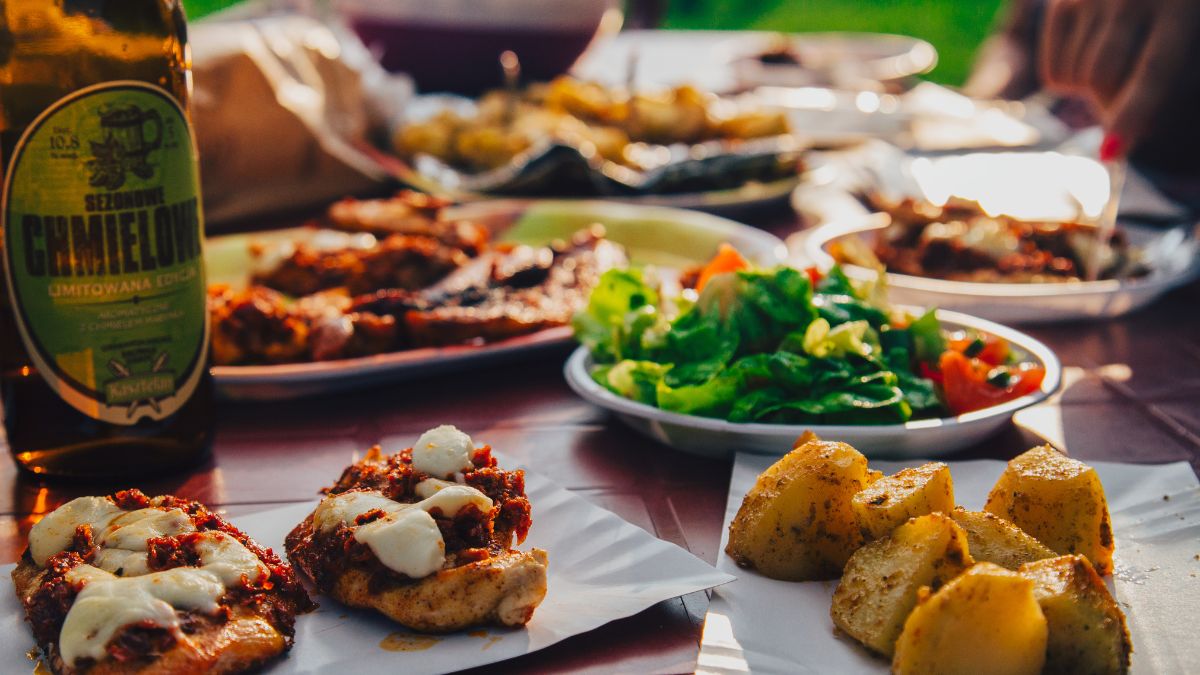
You Are What You Absorb—Not Just What You Eat
We hear it all the time: “Eat healthy.”
But what does that actually look like?
A salad? A smoothie? Skipping carbs? Cutting fat?
Truth is, eating well isn’t about restriction—it’s about nourishment. And when you nourish your body the right way, everything changes: your energy, focus, mood, digestion, and even your sleep.
To truly flourish, you need to understand what a balanced plate means—and how it fuels more than just your physical health.
🍽️ 1. A Balanced Plate = Macro & Micro Harmony
A real balanced plate isn’t just “low fat” or “high protein.” It includes a mix of macronutrients and micronutrients, working together to support your body on every level.
Macronutrients include:
- Carbs (your body’s main fuel source)
- Proteins (muscle repair and growth)
- Fats (hormone balance, brain health)
Micronutrients include:
- Vitamins (like B12, C, D)
- Minerals (like magnesium, iron, zinc)
- Antioxidants (like beta-carotene and flavonoids)
A plate that nourishes your body must include both.
🥦 2. Half Your Plate Should Be Fruits & Veggies
Fruits and vegetables are rich in fiber, antioxidants, and essential nutrients. They help:
- Support immune health
- Boost digestion
- Reduce inflammation
- Improve skin and energy
How to do it:
- Fill half your plate with colorful produce
- Mix raw and cooked varieties
- Eat the rainbow—more colors = more diverse nutrients
Aim for 2 servings of fruit + 3 servings of vegetables daily. Fresh, frozen, or steamed—they all count.
ALSO READ: Your Food Choices Affect Your Mood—Here’s 7 food you should know about – psychmyth
🍠 3. Don’t Fear Carbs—Choose the Right Ones
Carbohydrates get a bad rep, but they’re essential for brain function and energy.
The trick? Choose complex carbs that digest slowly and fuel you longer:
- Whole grains (quinoa, brown rice, oats)
- Root veggies (sweet potato, beets, carrots)
- Legumes (lentils, black beans, chickpeas)
Avoid highly processed carbs like white bread, sugary cereals, or pastries that spike blood sugar and crash your energy.
A quarter of your plate should come from high-fiber, slow-burning carbs.
🍳 4. Prioritize Lean Protein in Every Meal
Protein isn’t just for gym gains—it’s essential for:
- Tissue repair
- Hormone production
- Feeling full and satisfied
Good options include:
- Eggs
- Fish
- Chicken or turkey
- Tofu and tempeh
- Beans and lentils
Include a palm-sized portion of protein on your plate to stay energized and prevent cravings.
ALSO READ: Relaxation Is the New Productivity – psychmyth
🥑 5. Add Healthy Fats for Brain & Body Balance
Fat helps absorb vitamins, stabilizes hormones, and keeps you full.
Focus on:
- Avocados
- Olive oil
- Nuts and seeds
- Fatty fish like salmon or sardines
Fats should take up a smaller portion of the plate—roughly 1–2 tablespoons worth per meal.
Healthy fats = lasting fuel.
💧 6. Don’t Forget Hydration & Mindful Eating
A balanced plate also depends on how you eat:
- Drink water throughout the day (not just with meals)
- Eat slowly and chew thoroughly
- Avoid eating distracted—phones, screens, stress all impair digestion
Hydration and mindfulness help your body absorb the nutrients you’re working so hard to get.
✨ Final Words: Balance Isn’t About Perfection—It’s About Consistency
You don’t have to get it “right” every meal.
You don’t have to count calories or cut entire food groups.
To nourish and flourish, aim for real food, in real portions, with real intention.
When your plate is balanced, your energy stabilizes. Your focus sharpens. Your skin glows. Your mood lifts.
Food isn’t just fuel. It’s information, energy, and healing.
So next time you eat, ask:
Is this nourishing me—or just filling me?
Choose nourishment. That’s how you flourish.

